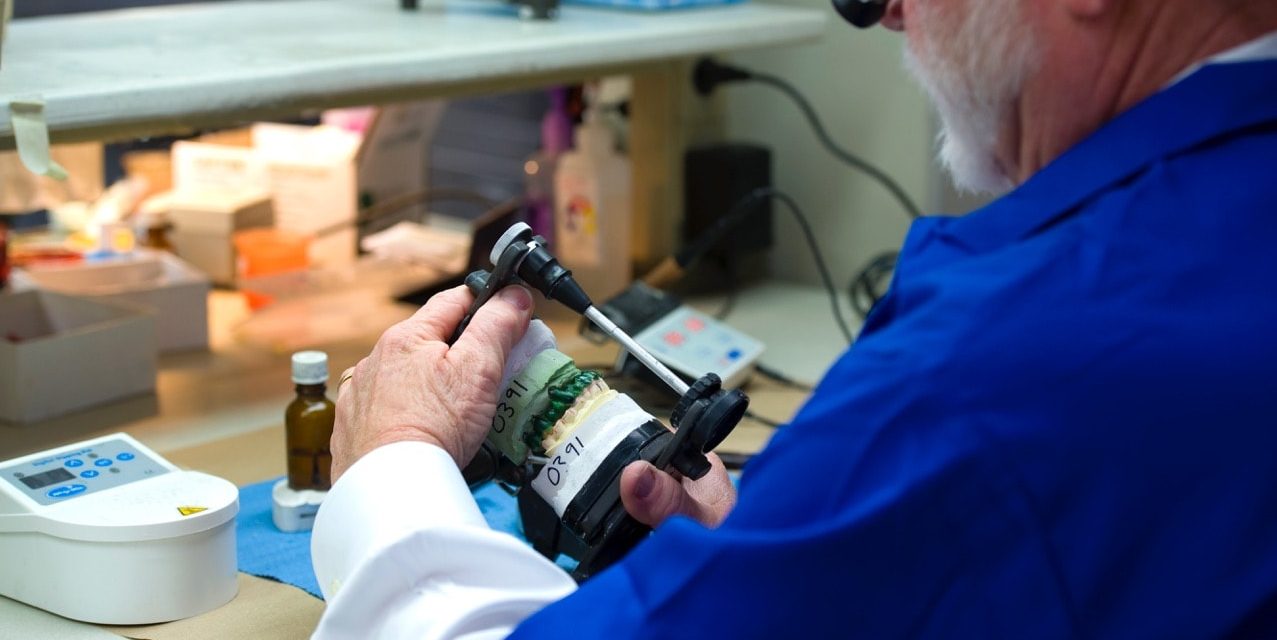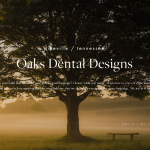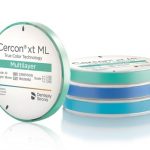REMOVABLES
Digital Dentures — for flexibility and business growth
Interview with Chris Waldrop, President, Burdette Dental Laboratory, Birmingham, Alabama
12 August 2018
Chris Waldrop is chairman of Burdette Dental Laboratory, based in Birmingham, Alabama. He’s both a technician and an accountant, and here’s his assessment of how going digital can improve the lab’s bottom line.
Burdette Dental Lab in Birmingham, Alabama is a large full-service laboratory, employing 63 staff at its facility with dentist clients across 13 states and the Caribbean. Committed to keeping step with the latest developments in dental technology, the lab’s crown and bridge department got involved with digital technology in the 1990s, and started discussions with Dentsply Sirona late last year about introducing it to their removables business, which employs nine team members. He sees the future of digital dentures providing many of the same benefits that digital technology has already proven for crown & bridge work.
They have had the equipment in place for digital dentures since the start of this year, and Chris says they are already seeing the benefits to the business. “We are looking to scale our business, and controlling our workflow is central to that,” he said. “Digital technology offers us a more consistent path to scalability.”
As the lab is just moving into the digital arena for removable products, they are working with just a small number of clients, and initially outsourcing the design work. Currently the design is carried out by AvaDent using their specialist software package. The lab scans their impressions and AvaDent produces the digital design for the lab to print for try-ins and milling the final product.
“We are looking to scale our business, and controlling our workflow is central to that..Digital technology offers us a more consistent path to scalability.”
As Chris sees it, the key challenges of the traditional removables business are: scalability, quality, profitability and communication, and he began investigating digital technology as a means to address all these issues, as well as the opportunity to reduce the need for the extensive training required for creating removables in the conventional way.
“Digital dentistry gives us more control of our in-house production, and allows us to shift some responsibilities internally and externally,” he explained. It also helps with work scheduling. There’s a weekly fluctuation in business of about 50%, which the lab normalizes by scheduling, but it’s not ideal, and means that at busy times the customer may have to wait. “We’d like to have quicker turnaround times, and with digital we can quickly flex up and flex down, depending on our workload. We can’t take people on when we are busy then lay them off again when we’re not, so using the digital technology is a part of that flexibility,” he said. “It’s a way to build our business in a more predictable way.” It also means that when one part of the business is particularly busy, machines and technicians can be diverted to that as required.
Since implementing digital processes for removables, turnaround time has dropped dramatically, says Chris. “Once you have printed the try-ins, any adjustments can be done easily, whereas with the old system it took time and extra work. Now you just re-scan, including any changes or additional information. It’s done instantly, and has no impact on turnaround time.’
Quality and predictability have been improved too. The dentures are made with top quality materials, and the use of machinery means that the product is exactly as requested – every time. “The fit is more predictable now – heating and cooling of acrylic can cause discrepancies but with milling solid state materials you get a true fit – and it will always be the same.” Chris’s team work closely with a number of dentists who have embraced the system, one of whom is prosthodontist Dr. Valerie Cooper in Dayton Ohio, an early adopter of digital removable technology. “Valerie Cooper believes she’s seen a 60% reduction in problems with fit,” he said, and in fact Dr. Cooper frequently skips the try-in stage altogether, so confident is she with the accuracy of the system.
Going digital has clear advantages for communication with dentist clients and improved customer service. “We saw on the crown and bridge side the enhanced ability to communicate with our clients, wherever they are geographically,” said Chris. Previously there were issues with transportation and time delays, making it difficult to discuss cases in real time. “Either one party or the other would have the wax-up, now we can look together at the case, discuss it and make changes immediately. It has vastly improved our collaboration.” All of these factors are great for relations between dentist and lab, which give you improved satisfaction and account retention.
He believes that using digital technology enhances the technician’s skills. “It helps leverage the knowledge and expertise of the technician,” he says. “It’s a different application of your skills but they are still needed.”
Digital technology will enable him to have more control over his costs and scheduling. For the past 20 years, Burdette has operated a system of staggered shifts, the first people arriving at 5.30am and the last leaving at 8pm, but they are looking to take the next step. “Because of the cost of the capital equipment we are now looking to maximise its use by working 24 hours. We’re planning to introduce three 8-hour shifts, which will bring the unit cost of our products down,” said Chris.
He believes that using digital technology enhances the technician’s skills. “It helps leverage the knowledge and expertise of the technician,” he says. “It’s a different application of your skills but they are still needed. You still need to understand occlusion, the materials and how to work with them. The technology simply allows you to use your knowledge and expertise in a different way – the dentist still relies on our expertise, and we still need the human skills to collaborate with the client.”
For a business with a view to growing, and growing profitably, Chris sees going digital as the way forward for dentures. “Compared with hand made products, the labor time is significantly reduced,” he said. “There is less hands on time, which brings your labor costs down. We’ve seen our labor costs fall by 56% since introducing the digital technology into our lab.” On the other hand, the top quality denture material costs are higher, and there is the cost of the equipment to factor in, so that there is no overall fall in cost, but the product is now a premium one, using the best materials available. “The overall cost of producing the denture is not reduced, but the quality and the predictability of it are much better,” he argued.
At this point in time, Burdette is new to the digital technology for dentures, and a large part of their business is still in the conventional side, but they see it moving fast towards digitization. “It’s very exciting; there’s new development all the time,” said Chris. “The technology gives us the ability to grow and enhance our business, and the service we offer our dentist clients. It will take time and investment but we believe it is the way forward and we will be in a better place.”











